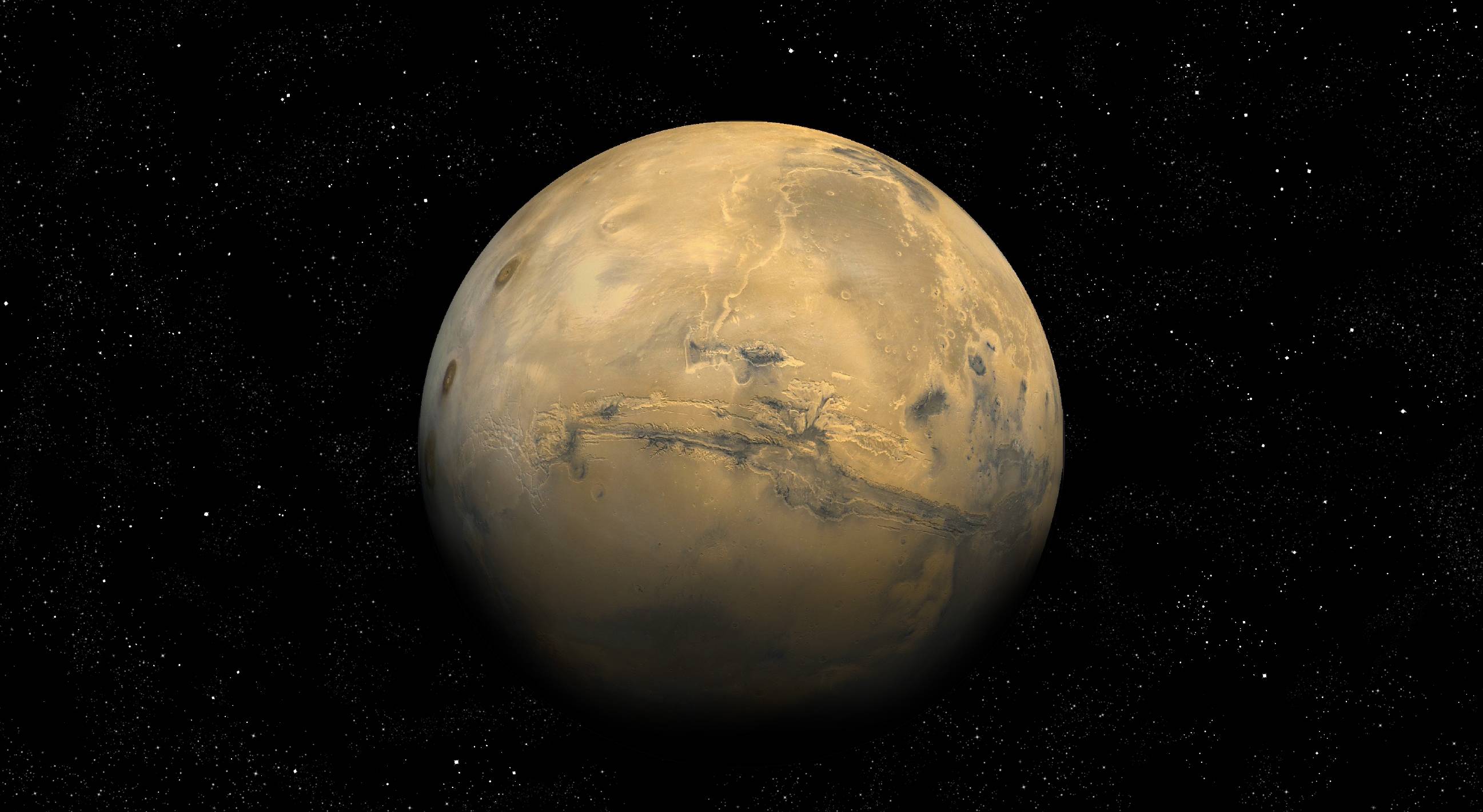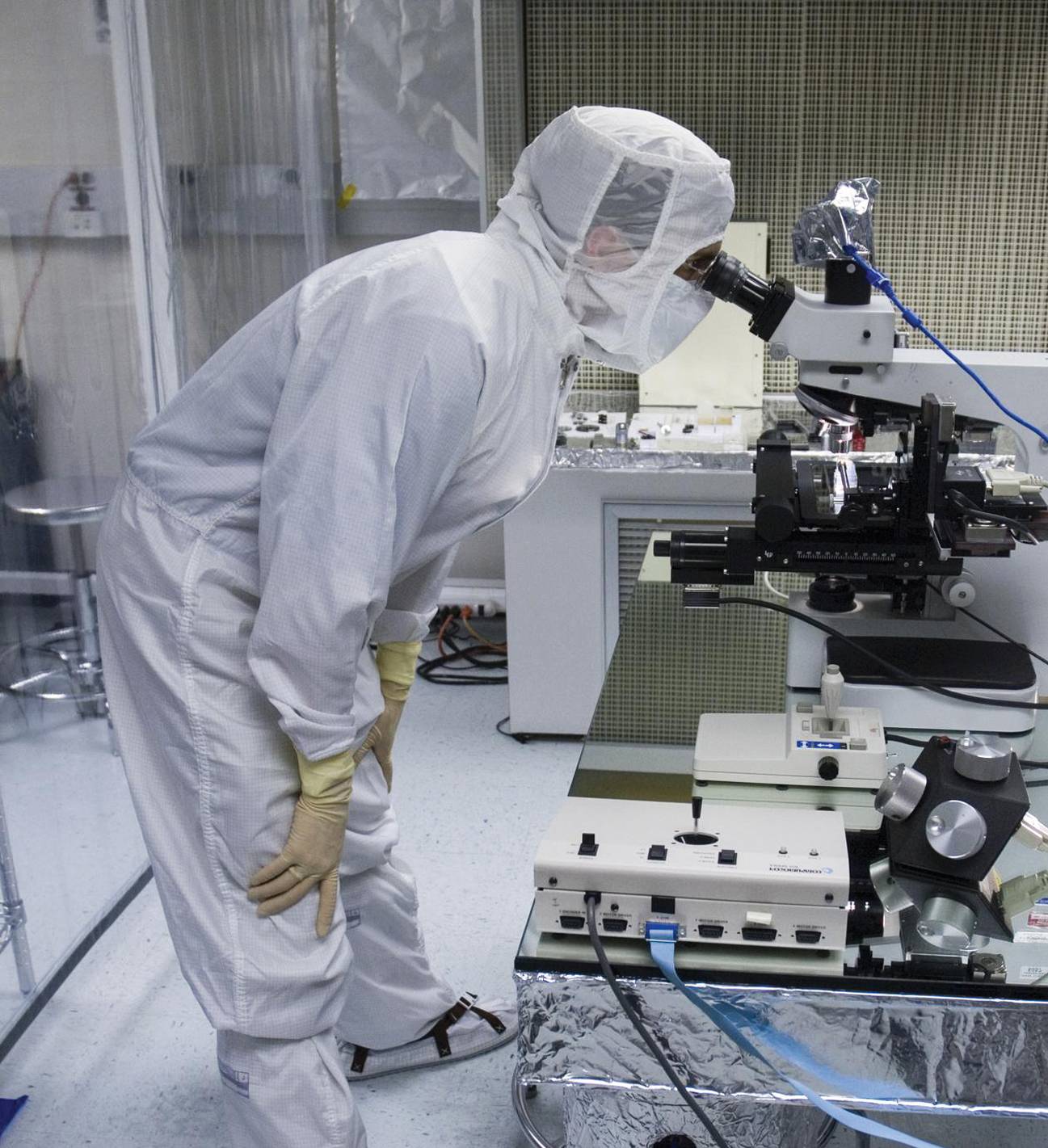
Destination Mars
by Robyn Ross
Bobcats team with NASA for mission to the red planet
Does life exist on the red planet? And what will it take for humans to survive there — on short-term missions or in a permanent colony? For decades, NASA has been studying the geography and climate of Mars, as well as the logistics of long-term human space travel. In July, researchers at the University of Edinburgh published a study in Scientific Reports, suggesting that Mars may be more toxic than scientists thought. And while that may be a blow to any possibility of finding life on Mars, it could also calm NASA’s worries about Earth’s bacteria contaminating the planet.
The first human mission to Mars could be as early as the 2030s. At Texas State and in NASA laboratories, university faculty, students, and alumni are helping lay the groundwork for that mission.
BIOFILMS IN SPACE
The round-trip journey to Mars will take about three years. A one-way trip is about six to nine months, and
a crewed mission will last around 1,100 days. To spend that much time in space, astronauts need a life-support system that effectively recovers and reuses water from urine, perspiration and the humidity in astronauts’ breath. But on the International Space Station, considered a test lab for long-term space travel, a biofilm has formed in
the water filtration system. Biofilms are communities of microorganisms that attach to a surface, such as the plaque that forms on teeth. The space station team is able to clear the biofilm from the water system, but the solution is expensive and only temporary.
A better understanding of how biofilms form in space will help NASA design systems that aren’t vulnerable to biofilm-related clogs or contamination. Regents’ Professor of Biology Robert McLean, Aquatic Resources doctoral student Starla Thornhill, and graduate biology student Quentin DiPasquale are working on a NASA grant-funded study of biofilms on the space station. This project is a partnership with colleagues from Arizona State University and the Johnson Space Center. McLean has been studying biofilms since the late 1990s, when he organized an experiment that flew on the space shuttle Discovery and was the first to show that bacteria could colonize on a surface in the absence of gravity. The Texas State team is learning how a mixture of common bacteria functions in a low-gravity environment by using a bioreactor system to simulate the near-weightlessness of space. Eventually, the same bacteria will be sent to the space station for study.
Thornhill and McLean are also using the bioreactor system to study how bacteria grow in a microgravity environment on stainless steel, which is used in the pipes and tanks of the water filtration system on the space station. In the process, they’ll learn if biofilms corrode the stainless steel, which could be harmful to the filtration system,
and whether the biofilms can be treated with silver-based disinfectant. “We need to understand how bacteria grow in that kind of gravitational environment,” Thornhill says. “We can’t send people to Mars and have their water filtration system fail.”
WATER ON MARS
Has Mars ever supported life? Because water is essential to life as we know it, researchers are focusing their search on places on Mars where water once flowed. River sediments are likely places for microbial life to survive or to have existed in the past. Professor of Practice Justin Wilkinson is finding such sediments by comparing landforms that were created by water on earth to features with a similar appearance on Mars.
Wilkinson, a physical geographer, has for the past three decades studied megafans, a landform that, from above, has the appearance of a delta but lies far from any coastline. On Earth, megafans are formed by rivers changing course multiple times over thousands of years, in the process depositing sediments across a wide, fan-shaped cone of land. To identify megafans on Earth, Wilkinson studies photos taken from the space station, planes, and satellites, and contour lines based on radar from the space shuttle. In some cases, drilling at the site of a suspected megafan confirms his hypothesis; in northern Namibia, the government discovered two much-needed aquifers after drilling in a megafan identified exclusively from remote sensing imagery.
Images of Mars show features that to Wilkinson suggest megafans formed long ago by sediment laid down by rivers. In a proposed NASA project, he plans to test his hypothesis using computer recognition and deep learning to compare images and maps of known megafans on Earth to suspected megafans on Mars. If the match is confirmed, NASA will be step closer to finding sediments that might hold evidence of life forms on Mars. “The research flows from understanding new ideas about how rivers operate,” Wilkinson says.

in a clean room.
ASTROMATERIALS CURATION
Before humans embark on a mission to Mars, rovers and robotic spacecraft will collect samples of the planet’s rocks, soil, and atmosphere. Such samples provide valuable clues about the planet’s history and whether it has supported life in the past. Once the specimens are brought to Earth, they’ll require special care to preserve their scientific integrity: They’ll need to be kept free of contamination and prevented from reacting with Earth’s atmosphere. In addition, because the temperature
and pressure on Mars are much lower than on Earth, specimens from Mars will need to be stored in facilities that replicate those conditions.
Assistant Professor of Practice Christopher Snead works in astromaterials curation, which is the collection and preservation of such samples. The Johnson Space Center, where Snead works, is already home to an extensive collection of astromaterials: the lunar rocks collected by Apollo astronauts, cosmic dust, and asteroid samples. Snead specializes in advanced curation, the development of new technologies to handle astromaterials from future missions, including those to Mars.
Snead, who joined the university in December through its relationship with Jacobs Engineering, worked over the summer with a Texas State intern who programmed robots to handle astromaterials samples. Such internships are one benefit of the contract between the university and Jacobs, now in its third year. “The collaboration gives the students access to cutting-edge research and the potential for working here one day,” Snead says. “It’s a great thing to put on one’s résumé that you worked at NASA developing robotic technology to be used on lunar and Mars samples.” ✪